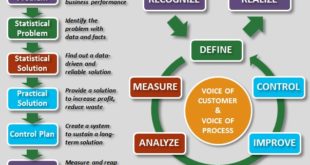Late delivery or software defects can damage a brand’s reputation — leading to frustrated and lost customers. In extreme cases, a bug or defect can degrade interconnected systems or cause serious malfunctions. Consider Nissan having to recall over 1 million cars due to a software defect in the airbag sensor detectors. …
Read More »AI in Project Management
A project comprises a series of tasks designed to meet a specific objective. It can be developing a new product/service, constructing a bridge or building, house renovation, upgrading the data system, implementing new business, etc. All business people want to find a way to manage their projects effectively to boost …
Read More »Configuration Management Requirements, Standards and tools
Configuration Management is the process of maintaining systems, such as computer hardware and software, in the desired state. Configuration Management (CM) is also a method of ensuring that systems perform in a manner consistent with expectations over time. Originally developed in the US military and now widely used in …
Read More »Silicon Lifecycle Management (SLM)
Product Lifecycle Management offerings have helped companies manage their product lifecycles for decades, reducing costs, improving quality, and making customers happy. Silicon Lifecycle Management (SLM) is applying such processes in the semiconductor industry for the manufacture of silicon chips. Semiconductor development is currently in one of its periodic crises, …
Read More »Lean Six Sigma in Aerospace and Defense Industry ensures the highest level of cost-wise readiness consistency across the unit, quality, and production environments
Digital transformation has become the hottest buzzword of this decade. New technologies and tools are supporting the transformation journey of companies big and small as they compete to get a bigger slice of business in a fast-paced competitive environment. Although digital transformation fast-tracks a company’s growth, it has to be equally …
Read More »Avionics software planning and development process and standards
Contemporary aircraft, both civilian and military, are equipped with various radio–electronic onboard devices, which support a pilot in executing complex air missions. The rapid development of digital electronics and IT, increasingly distinct over the recent years, requires a pilot of a modern aircraft to have the in-flight support of onboard …
Read More »Work-breakdown structure (WBS)
A work-breakdown structure (WBS) in project management and systems engineering, is a deliverable-oriented breakdown of a project into smaller components. A work breakdown structure is a key project deliverable that organizes the team’s work into manageable sections phases, deliverables and work packages. The Project Management Body of Knowledge (PMBOK 5) defines …
Read More »Project Statement of Work (SOW) in Aerospace projects
Developing a needs or requirements document can be a very complex and challenging task. Requirements documents include statements of work, standards, specifications, and other documents mandated for use by law. The primary function of the SOW is to specify the deliverable or deliverables that a vendor or internal department is …
Read More »System integration
System integration is defined in engineering as the process of bringing together the component sub-systems into one system (an aggregation of subsystems cooperating so that the system is able to deliver the overarching functionality) and ensuring that the subsystems function together as a system. With regards to software solutions, …
Read More »Product Requirements Document (PRD)
The Product Requirements Document or PRD describes all aspects of a new idea required or desired to make its realization a success. The PRD is the bridge between the often vague project briefing and the highly detailed engineering implementation plan. It is also known as the Program Of Requirements (POR), …
Read More » International Defense Security & Technology Your trusted Source for News, Research and Analysis
International Defense Security & Technology Your trusted Source for News, Research and Analysis



